The MAHD Framework is a flexible, agile-based product development process that:
While MAHD is rooted in the same agile principles that have fueled agile for SW growth, it integrates important elements needed to support hardware development efforts.
Agile principles can be applied to any project or process, but specific tactics, such as Scrum and SAFe, were designed for pure software-based products. The MAHD Framework is optimized for solutions that have physical components such as mechanical and electrical components but almost always include embedded firmware as well as software elements.
The MAHD Framework provides agile methods and tools to build on five key pillars that are proven to deliver product development success.
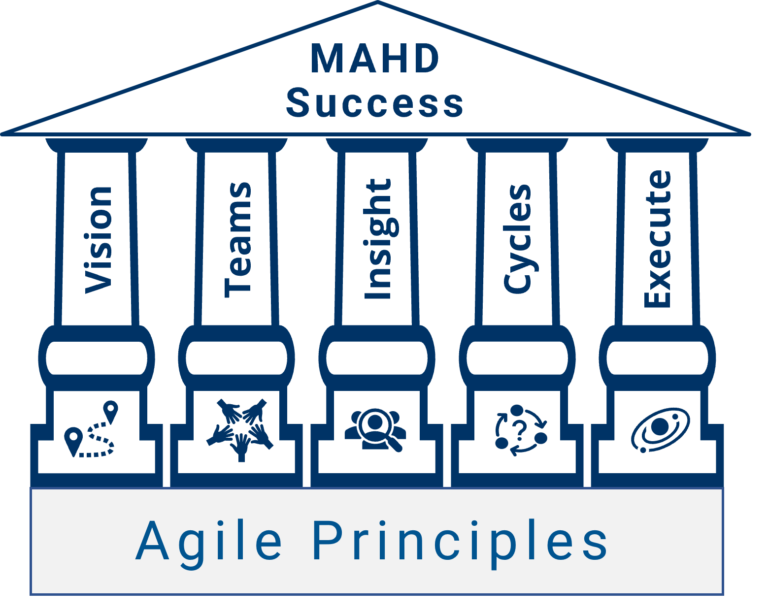
The agile manifesto identifies 12 principles that were written with SW in mind. While most of these are still valid for HW, they must be reconsidered to work for physical products. See our article on MAHD’s refinement of these 12 agile principles for HW.
Critical for hardware teams is the ability to consider the needs of the whole project including strategic priorities to guide decisions and Iteration Planning.
The principle of giving teams the autonomy to drive decisions while being accountable for results, self-correction and communication.
The acknowledgement that only when customers see and experience your solution can they provide meaningful input.

The principle that short execution and learning cycles allow teams to focus on the most important and valuable project elements while allowing adaption to changing requirements and project needs.

Giving teams the tools and methods to focus, meet commitments, collaborate and consistently deliver their best work in the most efficient way possible.
Learn about the benefits, key features and what’s unique in this 6-page overview of the MAHD Framework.
Teams that attempt to apply agile methodologies like Scrum directly to hardware development often become frustrated. This is because hardware features cannot be easily expressed as user stories, lead times require extensive forward planning, and products must be completed on a strict schedule.
The MAHD Framework was designed specifically to adhere to agile principles but modify the tactics to manage the unique, and often more constrained, characteristics of hardware development. MAHD methods incorporate the needs of physical products to:
Align sub-components and disciplines such as electrical, mechanical, and software
Allow flexibility to adapt to changes, while identifying attributes that need to freeze
Develop prototyping and validation strategies that work for hardware
Incorporate support functions such as procurement as well as external partners
Manage risk while maturing the design, documentation, and quality plans

The MAHD Framework was first created by Dorian Simpson and Gary Hinkle, who combined have over 50 years of experience in developing both hardware and software products. Through collaborations with product leaders from various companies, the framework has been continually improved and refined to cater specifically to hardware-based products and systems. While all contributors recognize the advantages of agile methodologies, they also acknowledge the need for modifications in tactics for such products.
Some of the considerations built into the MAHD Framework:
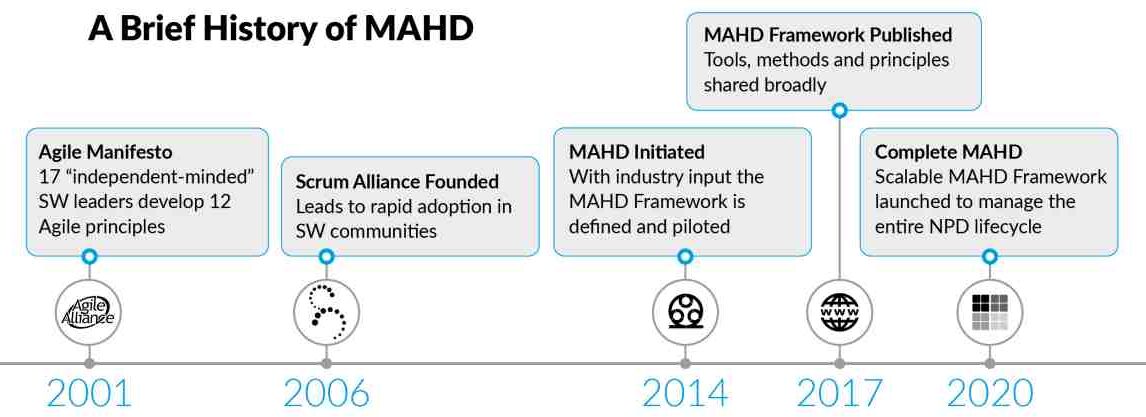
The MAHD Framework has at its core the elements to successful execute agile projects from vision to launch and additional elements can be added to transform your whole company to become an agile organization. By following the MAHD Implementation Roadmap your organization can quickly build agile skills to deliver products faster with higher value.
Early, clear strategic vision to guide teams with the right priorities based on customer value.
Five key elements and collaborative activities to ensure your project is off to the right start.
Use IPAC (Integrate, Prototype, Align, Customers) cycles to maintain an agile mindset while staying on track.
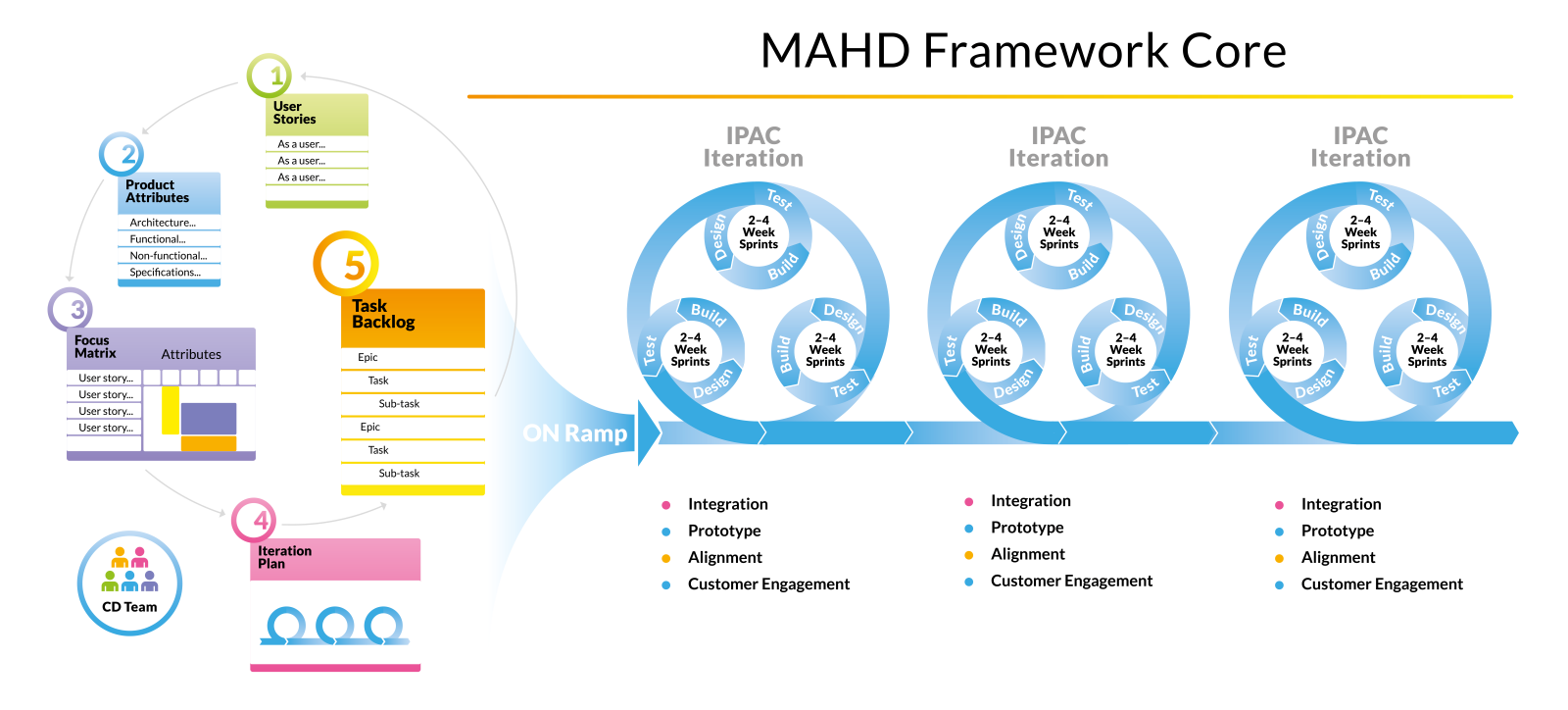
Using a team-of-teams approach, large and complex projects can be managing while staying true to agile principles.
Apply agile principles and methods to optimize the whole product portfolio, manage product roadmaps, make better resource decisions and guide product strategy.
Once a product is released to manufacturing, agile principles can help drive cost reductions, field upgrades and plan for a continuous stream of product and production improvements.
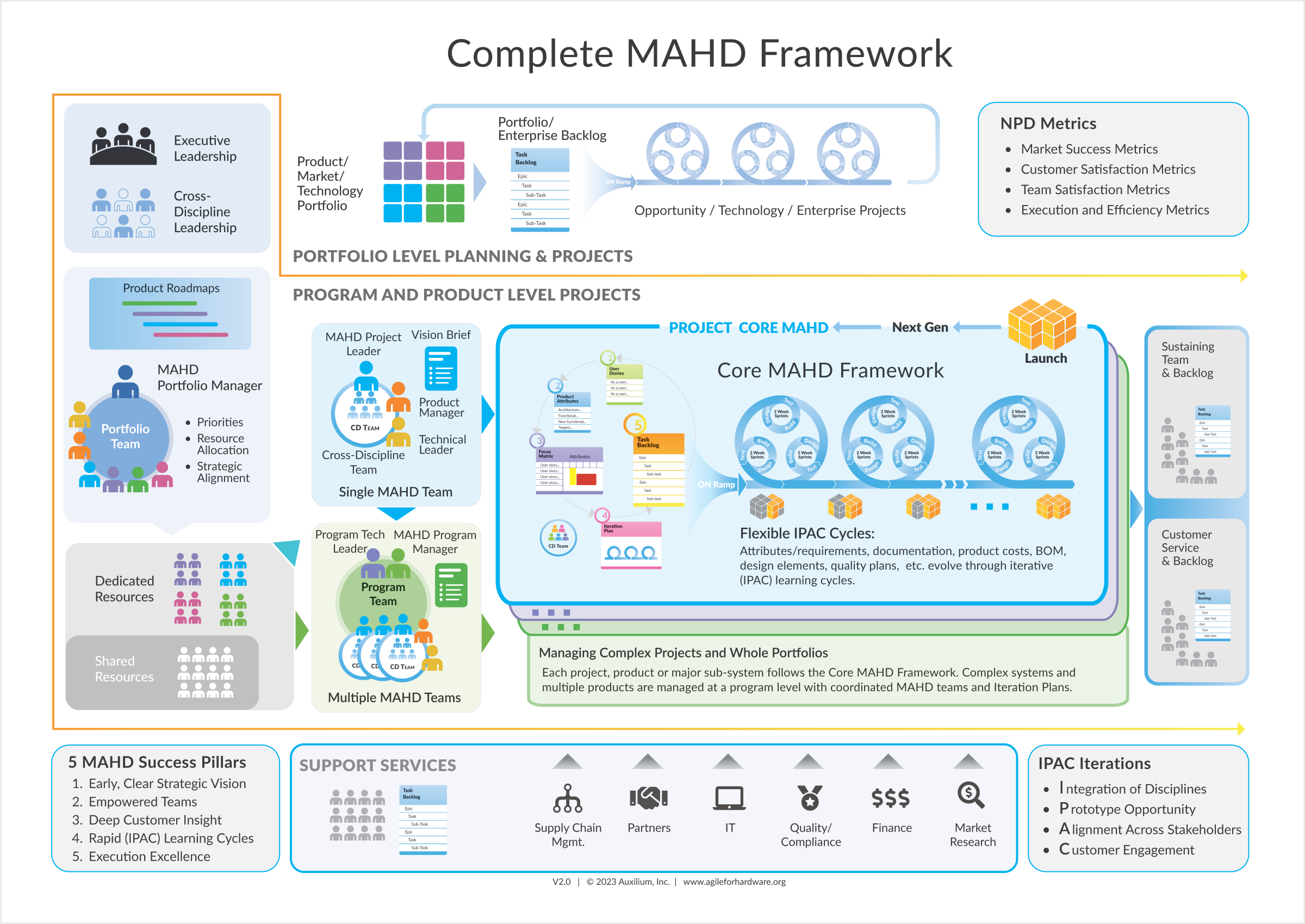
The first step of the MAHD implementation journey is understanding your situation, setting goals and building organizational support.
The best way to learn a new of working is by building a common understanding of agile methods and then implementing with a pilot project.
With learnings from your initial MAHD pilot project you’ll have the learning and insight to extend your agile way-of-working throughout your NPD process.
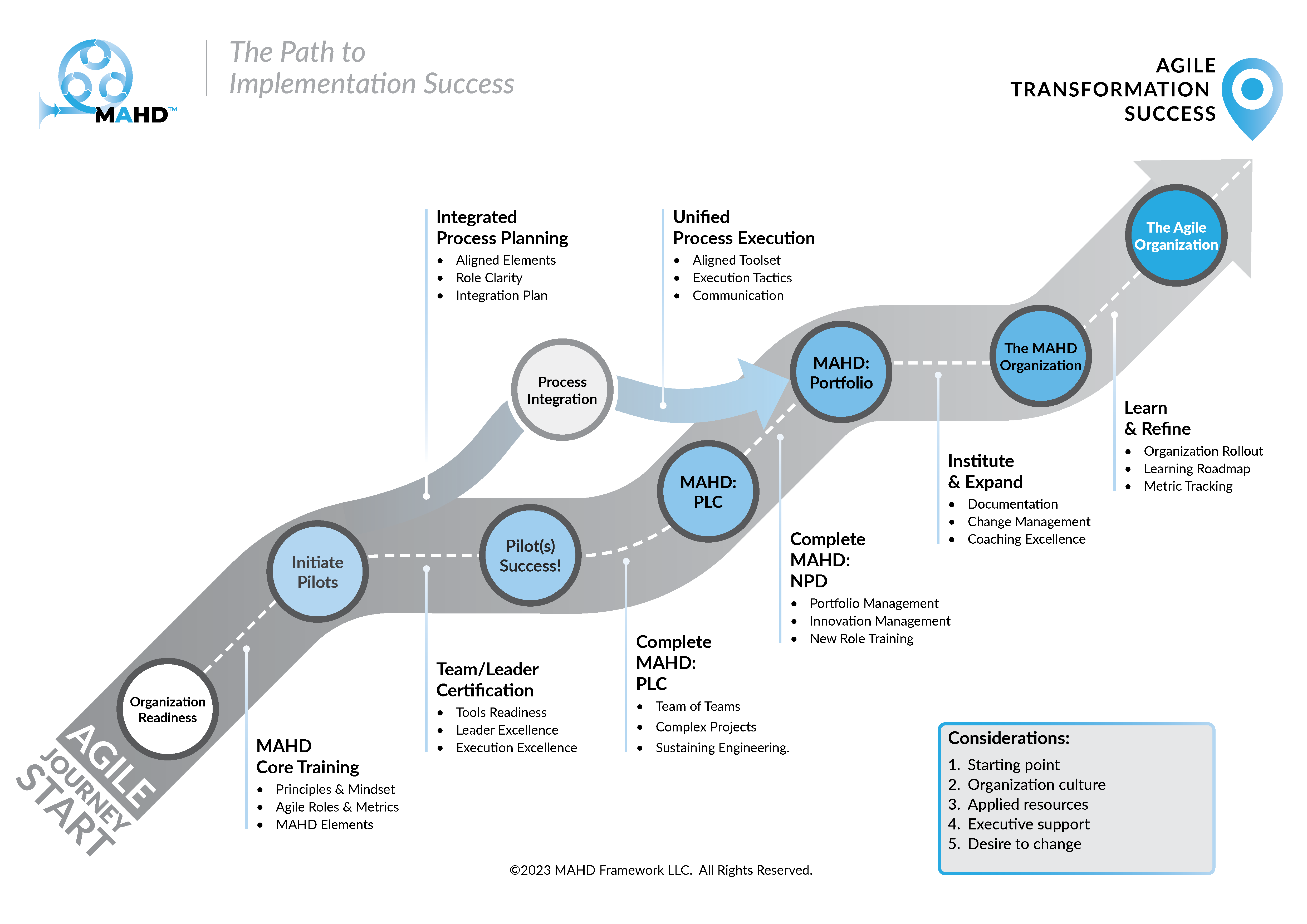
The table below summarizes the differences between the Modified Agile for Hardware Development (MAHD) Framework and other common Agile-based processes. The primary difference is that while MAHD applies Agile principles, the tactics are designed specifically to meet the needs of physical products.
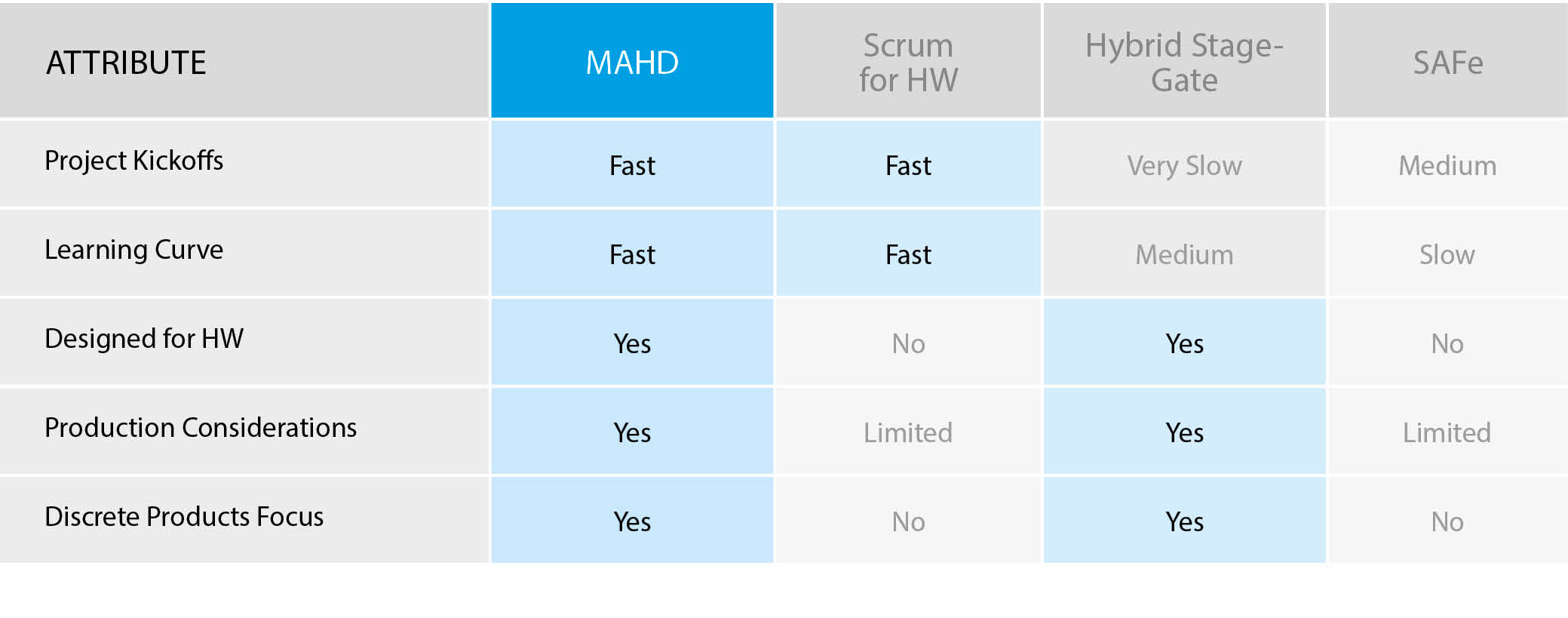
Download the Introduction to MAHD E-book to learn about the key elements of the MAHD Framework including how to initiate projects, the MAHD On-ramp and tips to get started going MAHD.
The fastest way to learn if MAHD is right for you is to request a 45-minute overview and discussion of your situation. Whether you currently use Stage-Gate, Lean, SAFe or other methods, we can help you quickly learn the unique benefits of the MAHD Framework.
Going MAHD Newsletter
Get the latest articles and resources delivered directly to your email.
© 2023 MAHD Framework, LLC